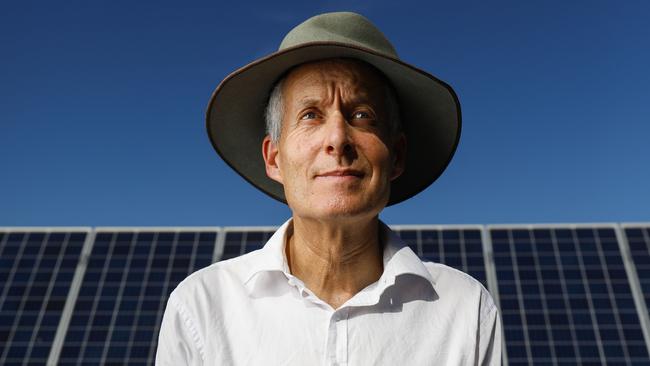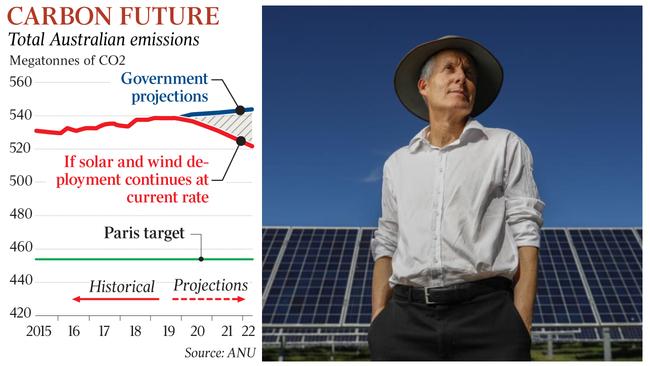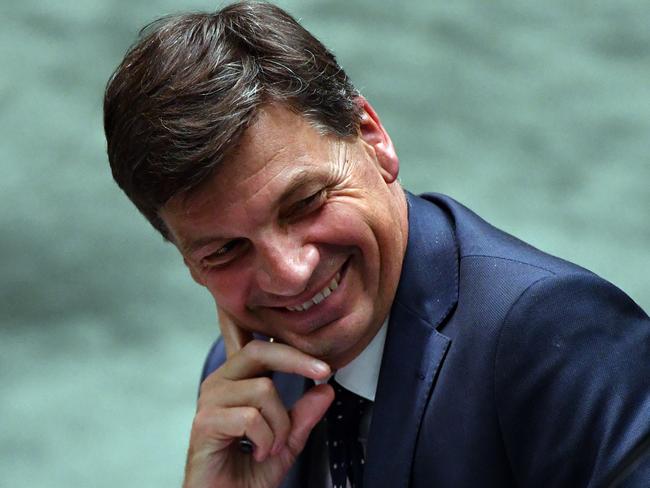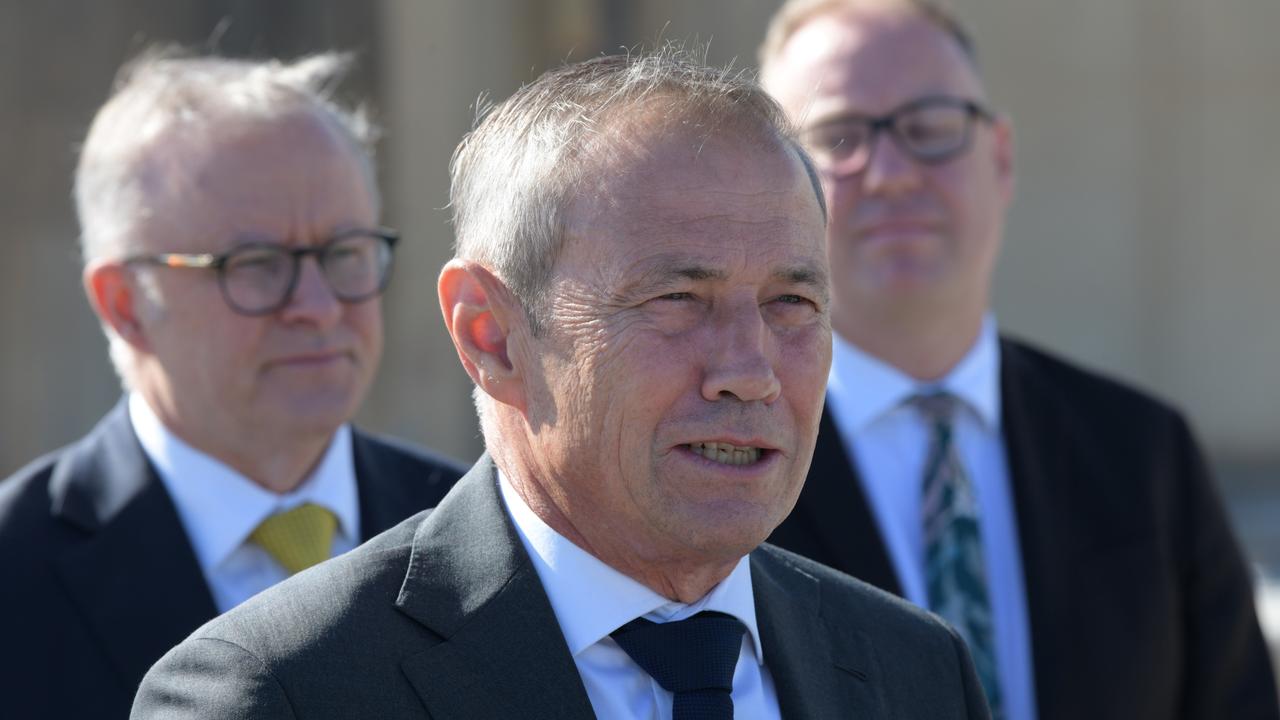Paris targets on radar in green energy surge
Huge investment in wind, solar power will see Australia meet Paris emissions reduction targets.

Australia will meet its Paris emissions reduction targets if it continues its current ramping up of renewable energy deployment, which has been among the fastest in the world.
Australian National University research finding Australia has spent 11 times the global average on renewable power will bolster the Coalition’s arguments that it is taking tough action on climate change. But the report shows massive future investments will be needed to maintain carbon emission reductions.
Australia’s greenhouse gas emissions, which represent about 1.3 per cent of the global total, could start to fall from next year following a boom in wind and solar power investment to three times that of Germany.
Between 2018 and 2020, Australia will install more than 16 gigawatts of wind and solar, an average rate of 220 watts per person per year. This was four to five times faster than China, the EU, Japan or the US.

As a result, the ANU research says, Australia’s greenhouse gas emissions will peak at about 540 megatonnes of CO2 equivalent a year. After a brief plateau, the researchers expect emissions to decline by 3 to 4 per cent from 2020 to 2022.
Sustaining the fall in emissions would require billions of dollars more investment by government in storage and transmission lines, so development of wind and solar projects could continue at a world-beating rate. “Declining emissions throughout the 2020s depends on government, particularly the federal government, to facilitate construction of adequate electricity transmission and storage to allow continued rapid deployment of solar and wind,” the ANU research says. “Without this, emissions may rise again.”
It says continued deployment of solar and wind at current rates would allow Australia to meet its Paris emissions target at low or zero net cost without using past Kyoto accounting credits.
The ANU report, by Andrew Blakers and Matt Stocks, says that if the federal government helps companies to build more transmission quickly, to allow electricity from wind and solar farms to reach cities, then electricity emissions will continue to decline rapidly.
“Otherwise, investment in wind and solar may slow down, causing emissions to stop falling or even to increase again,” it says.
The report says that helping companies to build pumped hydro and battery storage facilities is also important.
READ MORE: Editorial — Emissions cuts come at a cost to users | Schwartz a bright spark on solar power | Price of water soars as farmers buy in panic | Palaszczuk’s secret coal plan for Qld
Changes to outdated transmission rules in the national electricity market would greatly speed up investment in transmission and storage.
The report says the federal government is best placed to initiate the change.
Professor Blakers adds that state governments could establish renewable energy zones to overcome outdated transmission rules, in collaboration with or separately from the federal government. “These zones would be in places with good wind, sun and pumped-hydro energy storage resources,” he says.
“The role of government is to help companies provide new high-capacity transmission from these zones to cities, either through new power lines or upgrades to existing transmission.
“There are straightforward solutions to the teething problems of technical change in the energy industry — though not without some political headaches.”
Researchers estimate that the additional transmission and storage costs would add about $5 per megawatt hour to the cost of electricity in the national market when there was 50 per cent renewable energy in the system.
This would increase to $25/MWh at 100 per cent renewables.
The report says total costs of $55-75/MWh were lower than the average spot price of electricity, which was between $83 and $128/MWh last year.

Doubling current solar and wind deployment rates for the period 2021-30 would produce enough electricity to eliminate the remaining coal and gas to create an all-renewable electricity system. It would also make substantial emissions reductions in land transport by providing clean electricity to charge electric vehicles, the research said.
The report says complete conversion of the electricity system to renewables would reduce emissions by a third. Complete conversion to renewable electricity of land transport (electric vehicles) and air and water heating (electric heat pumps) would reduce emissions by 20 per cent.
Emissions Reduction Minister Angus Taylor said Australia was a world leader in clean energy investment and the unprecedented growth from wind and solar reinforced the need for more investment in storage and transmission.
“Supporting storage technologies that provide back-up power for intermittent renewables is vital to ensure energy is available when the wind isn’t blowing and the sun isn’t shining,’’ he said.





